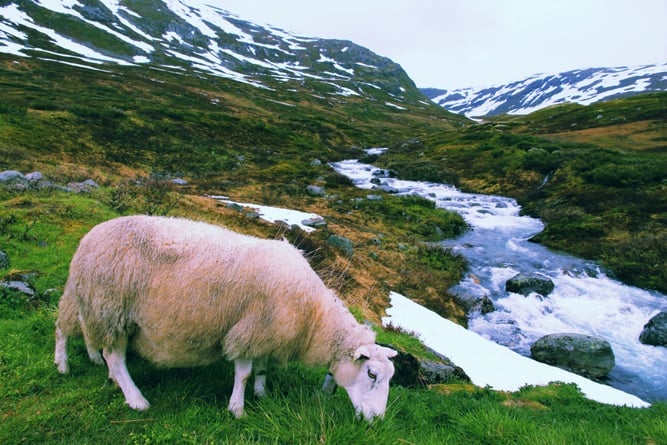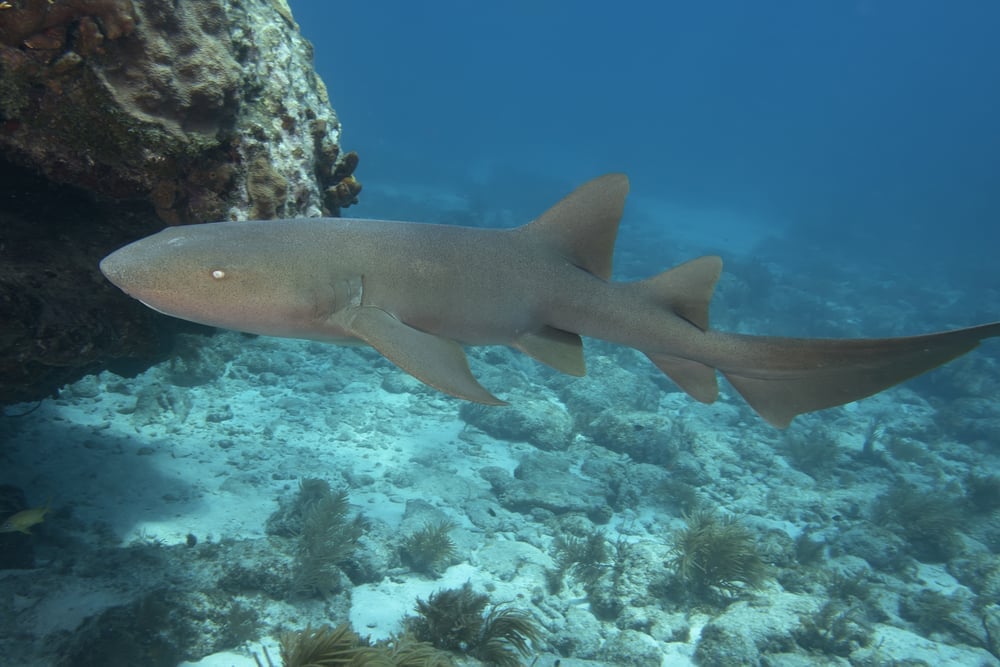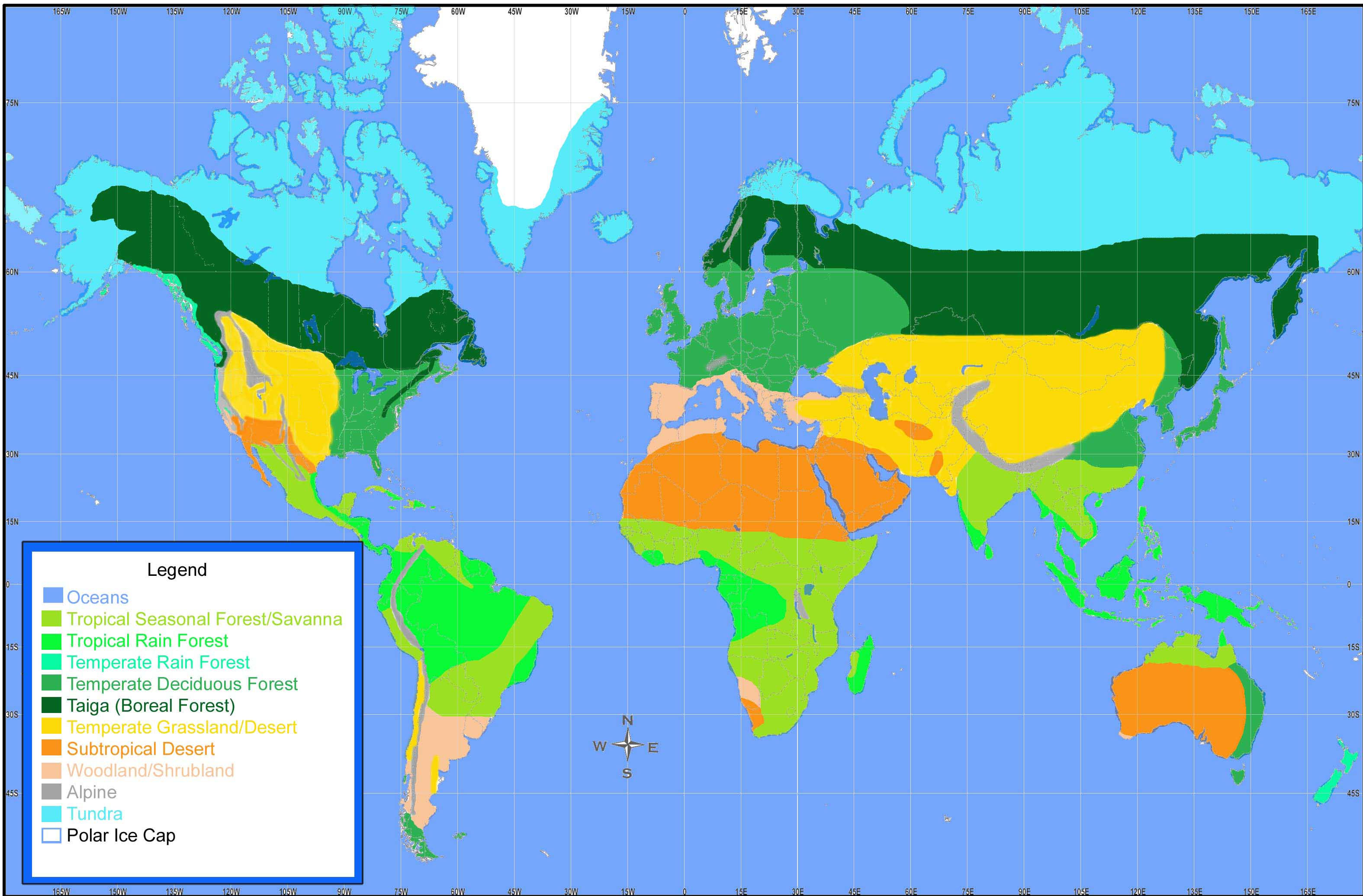Discover Pandipedia
Pandipedia is the world's first encyclopaedia of machine generated content approved by humans. You can contribute by simply searching and clicking/tapping on "Add To Pandipedia" in the answer you like. Learn More
Expand the world's knowledge as you search and help others. Go you!
The Necessity and Evolution of Seamarks
Our insular position and extensive coast line, affording facilities for an ever-expanding maritime commerce carried on by thousands of vessels voyaging to and from our ports and harbors, make the subject of our Seamarks one of international importance, but of especial interest to the British nation[1]. "Our Seamarks" encompass lighthouses, lightships, beacons, buoys, and fog-signals, all maintained to guide mariners safely[1]. The configuration of our coast line is ever slowly but surely changing, due to the influence of frost, heat, rain, floods, rivers, tides, currents, and the fierce action of tempest-tossed waters[1]. This necessitates constant vigilance and adaptation in the maintenance and placement of seamarks[1]. The earliest official references to seamarks on our coasts show that mariners primarily navigated by natural landmarks or prominent objects visible from the sea[1].
Early Lighthouses and the Trinity House
During the reigns of King Henry VIII and Queen Elizabeth, British commerce and shipping grew considerably, and it became necessary that something should be done to assist mariners in approaching and leaving our shores[1]. By the Act of 8 Elizabeth (1566), it was stated that the destroying and taking away of certain steeples, woods, and other marks standing upon the main shores adjoining to the sea coasts of this realm of England and Wales, being as beacons and marks of ancient time accustomed for seafaring men, to save and keep them and the ships in their charge from sundry dangers thereto incident, divers ships with their goods and merchandises, in sailing from foreign parts towards this realm of England and Wales, and specially to the port and river of Thames, have by the lack of such marks of late years been miscarried, perished and lost in the sea, to the great detriment and hurt of the common weal and the perishing of no small number of people[1]. In the year 1536, Henry VIII granted a charter to a maritime society known as the Trinity House of Newcastle-upon-Tyne, incorporating them and giving them certain privileges[1].
Transition from Fire Towers to Modern Lighthouses

The beginning of the seventeenth century saw several towers set upon salient points of our coasts for the purpose of showing lights therefrom to assist navigation, and gradually the number was increased[1]. They were simple, massive towers, built on prominent headlands, and huge fires of wood or coal were kindled on the tops[1]. These fire-towers required continual watchfulness and labour, and were uncertain in their efficiency[1]. The consumption of fuel was enormous, the labour of conveying it to the top of the tower was intense and the exposure to heat and weather trying[1]. The light in many instances, was weak, unable to send its rays any distance out to sea and much of its light would be sent up into the sky, where only its reflection from the clouds could be of service to the mariner[1]. For nearly two hundred years these bonfires blazed with burning wood or coal; the only improvements being that some of the fires were closed in with bars and made to present a bright side to the sea, while the landward side was screened, and subsequently in a few cases the coal fires were enclosed with glazed lanterns[1].
Advancements in Lighthouse Illumination
The invention of the argand burner in the latter part of the last century enabled a very remarkable improvement in lighthouse illumination to be introduced[1]; and again in the early part of the present century the construction of lenticular apparatus on the principle of Fresnel's celebrated invention offered another means of greatly improving the lights[1]. These improvements marked two important epochs in the development of lighthouse illumination[1]. Oil is the source of light employed at the large majority of stations on the British coasts[1]. Animal oil obtained from the sperm whale was used previously to 1846[1]. After that, vegetable oil expressed from the seeds of the rape and other cruciferous plants and then mineral oils such as paraffin and petroleum became the new rivals[1].
Lighthouse Structure and Engineering
Light-towers may be found at short intervals all round our coasts[1]. The towers now in use may be divided into three classes - viz. those erected upon the mainland or upon islands ,those set up upon sandbanks ,and those built upon rocks out in the sea[1]. Light-towers on the mainland are usually solid-looking structures, designed to withstand the influences of weather, of a sufficient height to command a good range to seaward and also to show as distinctive marks for the use of navigators in the daytime[1]. The chief elements taken into consideration in the construction of these towers are: (1) form ,(2) weight ,and (3) rigidity ,or the method of joining stone blocks one to the other[1].
Distinctive Features of Lighthouse Illumination
Numerous lighthouses are placed at short intervals all round our coasts[1]. From the lighthouse chart of the British Islands, it may be seen that the circles or segments of circles of light nearly everywhere overlap, thus forming a belt of illuminated sea all round our shores[1]. It will therefore be quite evident that the lights shining at night along a stretch of coast line must differ one from another, that not two lights exactly alike should be placed near to one another unless they are quite close and intended to be used together[1]. The necessity for distinctiveness has given rise to the employment of different well-marked peculiarities in lights, simple in character, such as may be easily and immediately recognised by the navigator when the lights come into view[1].
The Importance of Lightships
It is obviously impossible that lighthouses on the mainland can in all cases be made serviceable in directing vessels how to thread their way through the intricacies of narrow channels running in all directions and distant perhaps fifteen ,twenty ,or thirty miles from the coast[1]. To meet these requirements, lightships or floating lights were established[1]. The first lightship was placed at the Nore, at the entrance of the Thames, in 1731, for the benefit of vessels entering and leaving the port of London[1]. On the requisition of the colliers voyaging up and down, and at the general desire of the shipping trade of the East coast, another floating light was placed in 1736 to mark the Dudgeon Shoal off the coast of Lincolnshire ,at the entrance of the Wash, so that with easterly winds vessels could ,by keeping outside the lightship ,avoid getting embayed[1].
Beacons and Buoys: Unilluminated Guidance

Beacons and buoys are a very important branch of our seamarks, and contribute greatly to the value and efficiency of our coast-marking arrangements[1]. They are exceedingly numerous, and are invaluable to master mariners and pilots as guiding marks by day through narrow channels, and as warning marks for isolated dangers, but being as a rule unilluminated ,they are not so serviceable at night -time[1]. The term beacon is applied only to those unlighted pillars and other structures set upon rocks or sandbanks, or on the low outstretching points of land in the estuaries and broad parts of great rivers and elsewhere, which at certain times of the tide are hidden from the mariner's sight[1].
Coast Fog Signals: A Symphony of Sound

The effective employment of sound signals appears to be chiefly dependent upon two factors - the facilities offered by the atmosphere as a vehicle of sound, and the human capacity for hearing and distinguishing sounds of different characters[1]. Dr. Tyndall stated that neither rain, hail, snow, or fog has any sensible power to obstruct sound[1]. From this it is most satisfactory to know that, at those times when a sound signal might especially be of service, the sound is not likely to be obstructed in its passage[1]. The true test of a sound signal appears to be that it shall, under all conditions of weather, be uniformly effective at a short distance, say two miles[1]. The most recent adaptation of a reed horn ,isonboard two light-vessels sent out to China ,and have worked very satisfactorily[1]. The adoption of the siren as the most efficient sound signal for use in foggy weather, may be regarded as an important epoch in the history of the development of the use of sound signals[1].
Let's look at alternatives:
- Modify the query.
- Start a new thread.
- Remove sources (if manually added).
- Request a manual search from our human research team.

Globalization, defined as the growing interconnectedness among nations through trade, investment, technology, and cultural exchanges, significantly affects local economies. This interaction intricately weaves together opportunities and challenges that shape economic landscapes worldwide.
Economic Growth and Job Creation
One of the most prominent impacts of globalization on local economies is the potential for economic growth and job creation. As access to international markets expands, local businesses can increase their customer base. This can lead to significant growth opportunities, allowing them to scale operations and hire more employees. For instance, the European Union has highlighted that 'the number of jobs supported directly or indirectly by EU exports outside the union is continuously growing,' demonstrating how trade can undergird local employment levels[4]. Specifically, the increased demand for goods and services from local businesses provides a substantial boost to economic activity, enhancing overall employment rates.
Additionally, globalization encourages the establishment of new industries and improved infrastructure. This is particularly evident in developing countries, where the influx of foreign investments fosters job opportunities and strengthens economic sectors like manufacturing and technology. For instance, companies relocating their operations to lower-cost countries can stimulate employment in those regions, leading to better labor market conditions overall[1][8].
Increased Competition and Innovation

While globalization opens doors for local economies, it also intensifies competition. Local businesses now face rivals from around the globe, necessitating improvements in innovation and efficiency. This dual effect—pressure to innovate alongside expansive market opportunities—forces local businesses to evolve continuously. Firms that adapt to global standards can thrive, while those that cannot may struggle to survive[3].
For example, many local businesses are leveraging technology to enhance transactional efficiency and customer engagement. By adopting new technologies, from supply chain management systems to e-commerce platforms, local enterprises can optimize their operations, reducing costs and increasing customer satisfaction. This digital transformation allows local businesses to compete more effectively against larger multinationals, which frequently dominate global markets[3].
Challenges of Outsourcing and Offshoring
Despite the opportunities presented, globalization can lead to job displacement due to outsourcing and offshoring practices. Local businesses may shift production to countries with lower labor costs, causing employment losses in higher-wage economies. The negative impacts are typically observed in sectors characterized by low-skilled labor, such as textiles and manufacturing, as these industries are more susceptible to competition from cheaper imports[1][4].
These shifts can create regional economic disparities, particularly affecting areas reliant on industries that have relocated. The European Globalization Adjustment Fund was established to help counteract these negative effects, providing support to workers displaced due to globalization-induced changes[4]. Such initiatives underscore the need for targeted policies to navigate the adverse consequences while maximizing the benefits of economic integration.
Wage Dynamics and Inequality

Globalization can exert downward pressure on wages across various sectors. As businesses outsource jobs to countries with lower wage thresholds, local workers may face stagnant or declining wages[1][8]. This has led to increasing income inequality within nations, with a notable wage gap widening between highly-skilled and low-skilled workers. For example, globalization has created significant wage disparities that challenge middle-income, middle-skilled workers in developed economies as they compete with lower-wage workers from emerging markets[2].
Furthermore, while skilled labor tends to benefit from the dynamics of globalization through higher wages, unskilled laborers often find themselves at a disadvantage. The increase in competition from foreign markets can lead to wage stagnation and job insecurity for workers in less competitive sectors, exacerbating financial instability and inequality[1][5].
Cultural Impact and Local Identity
Globalization also has a profound impact on local cultures and identities. As international brands and products infiltrate local markets, there is a risk of cultural homogenization, where local traditions and business practices may become overshadowed by global standards. This cultural shift can dilute local customs and consumer preferences, leading to a loss of local identity[3][9].
However, globalization can also foster a richer exchange of ideas and cultural practices, promoting diversity and inclusivity. Local businesses can leverage unique cultural attributes to differentiate themselves in a crowded market, offering products that reflect local heritage and values, thus creating a niche in the global landscape[3].
Conclusion

In summary, globalization exerts a multifaceted impact on local economies. It provides significant opportunities for economic growth, innovation, and cultural exchange while concurrently posing challenges related to competition, labor displacement, and wage disparities. The dual nature of globalization underscores the importance of comprehensive policies that maximize benefits while mitigating adverse effects. By navigating these complexities effectively, local economies can adapt and thrive in an interconnected world.
Let's look at alternatives:
- Modify the query.
- Start a new thread.
- Remove sources (if manually added).
- Request a manual search from our human research team.
Get more accurate answers with Super Search, upload files, personalised discovery feed, save searches and contribute to the PandiPedia.

The Gemini Deep Research agent is built on top of the Gemini 2.5 Pro model[1]. Since its initial launch in December 2024, the capabilities of Gemini Deep Research have been improved[1].
As evidence of that, the performance of Gemini Deep Research on the Humanity’s Last Exam benchmark has gone from 7.95% in December 2024 to the SoTA score of 26.9% and 32.4% with higher compute in June 2025[1].
Let's look at alternatives:
- Modify the query.
- Start a new thread.
- Remove sources (if manually added).
- Request a manual search from our human research team.
- @ask_pandi
Neurons on a chip can learn to play Pong. A dish of cells self-organizes and responds to stimuli in real time ⚡🤯
🧵 1/6
- @ask_pandi
Synthetic Biological Intelligence connects living neurons with silicon. Electrical pulses serve as the shared language ⚡
🧵 2/6
- @ask_pandi
A closed-loop system feeds position data to neural cells. Their responses dynamically alter incoming signals 🔄
🧵 3/6
- @ask_pandi
Cortical Labs’ CL1 fuses 800,000 human neurons on a chip. It achieves sub-millisecond feedback loops ⏱️
🧵 4/6
- @ask_pandi
This biocomputer learns with minimal samples and uses only hundreds of watts, outperforming typical AI workloads 🔋
🧵 5/6
- @ask_pandi
These breakthroughs may redefine drug discovery and disease modeling. What are your thoughts on biocomputation? 🤔
🧵 6/6
- @ask_pandi
Sources from:
Let's look at alternatives:
- Modify the query.
- Start a new thread.
- Remove sources (if manually added).
- Request a manual search from our human research team.

Foods that can boost immune system function include fruits and vegetables, nuts, seeds, whole grains, dairy (or fortified alternatives), and protein sources like meat and fish. Key nutrients for immune health are vitamins A, B6, B12, C, D, and minerals like zinc, iron, selenium, and copper, which are best obtained from a varied diet rather than supplements alone[2][4].
Specific immune-boosting foods include citrus fruits, broccoli, spinach, garlic, ginger, turmeric, and yogurt with live cultures[1][3][4][5]. Additionally, fatty fish are beneficial due to their omega-3 fatty acids, which help reduce inflammation[4].
Let's look at alternatives:
- Modify the query.
- Start a new thread.
- Remove sources (if manually added).
- Request a manual search from our human research team.

Hamilton Beach Electric Breakfast Sandwich Maker
This appliance allows users to cook an egg, toast an English muffin, and heat Canadian bacon or melt cheese all at once, making delicious breakfast sandwiches effortlessly[1].

Angry Mama Microwave Cleaner
A fun tool that cleans microwaves by releasing steam to loosen grime, making it easy to wipe clean[1].

BUTEFO 8-in-1 Kitchen Tool
A versatile gadget that combines a lemon squeezer, cheese grater, and measuring cup among other functions, offering eight tools in one[1].

MEATER Plus Smart Meat Thermometer
A wireless thermometer that tracks the internal temperature of food and connects to an app, estimating cooking time left[1].

Tupperware Chop ’N Prep Chef
A manual mini chopper that makes it easy to chop garlic and parsley without needing a knife or food processor[1].

Casabella Guac-Lock Container
This container locks out air to keep guacamole fresh and vibrant, preventing browning[1].

Evo Oil Sprayer
This sprayer allows for even oil application, ideal for healthier cooking results without unnecessary propellants[1].

OXO Baker’s Dusting Wand
A handy tool for evenly sprinkling confectioners sugar or cocoa, replacing traditional sifters with a more compact option[1].

Simple Spreading Butter Spreader Knife
Designed to easily shred cold butter for smoother spreading on toast[1].

Dreamfarm Non-Stick Pizza Scissors
These scissors cut through pizza easily, providing precise slices without the need for traditional pizza cutters[1].

Chef’n Nut Butter Stirrer
This gadget helps mix natural nut butters efficiently, addressing the issue of separation[1].

Whiskware Pancake Batter Mixer
A squeezable bottle that mixes pancake batter and dispenses it neatly, making breakfast quick and easy[1].

Stainless Steel Watermelon Slicer
A safe tool for kids to slice watermelon, providing uniform portions without mess[1].
Breville Joule Turbo
An immersion circulator that rapidly heats water, ideal for sous vide cooking, and features a user-friendly app[11].
:max_bytes(150000):strip_icc()/anova-precision-oven-0307f727601b4fa68872fc8b31649df5.jpg)
Anova Precision Oven
A smart oven that combines convection with steam cooking, capable of several cooking methods including sous vide[11].
Tovala Smart Oven
A versatile smart oven that can bake, broil, and steam, controlled via app or QR codes[11].
Breville Smart Oven Air Fryer Pro
A multi-function toaster oven that excels at air frying, toasting, and baking[9].

Instant Pot Pro Plus
A versatile cooker that offers pressure cooking, slow cooking, and smart connectivity for ease of use[11].
GE Profile Opal 2.0 Nugget Ice Maker
A countertop ice maker that produces nugget ice and connects to Wi-Fi for scheduling and alerts[7].
:max_bytes(150000):strip_icc():format(webp)/__opt__aboutcom__coeus__resources__content_migration__serious_eats__seriouseats.com__2018__07__20180624-kitchenaid-stand-mixer-vicky-wasik-8cdce31048104613aef272e52a4419c8.jpg)
KitchenAid Stand Mixer
A classic kitchen appliance known for its durability and performance, perfect for mixing a variety of ingredients[10].
LG Smart Refrigerator
A smart fridge with Wi-Fi connectivity, capable of monitoring its contents and integrating with smart home systems[12].
Samsung Smart Dishwasher
Features robust connectivity with the SmartThings app, making it easy to manage and monitor dishwashing[12].
Bosch Dishwasher
Renowned for quiet operation and efficient cleaning, often regarded as a top choice for luxury kitchens[12].
Frigidaire Affordably Luxurious Range
Offers an array of features at a budget-friendly price without sacrificing style[12].
Whirlpool Smart Oven
Known for being user-friendly and durable, this oven offers smart appliance features that enhance cooking[12].
Hamilton Beach Rice Cooker
A reliable and efficient option for perfectly cooked rice without needing constant supervision[5].
Instant Pot Duo
Versatile and popular for pressure cooking, slow cooking, and more, ideal for food prep[9].
Cuisinart Food Processor
A high-rated kitchen staple for chopping, slicing, and mixing, making meal preparation faster and easier[9].
Let's look at alternatives:
- Modify the query.
- Start a new thread.
- Remove sources (if manually added).
- Request a manual search from our human research team.
Get more accurate answers with Super Search, upload files, personalised discovery feed, save searches and contribute to the PandiPedia.
Overview of Biomes
Biomes are large geographic regions characterized by specific climate conditions, vegetation, and animal life. They are vital to understanding the Earth's ecosystems, as each biome supports unique communities of flora and fauna that have adapted to their environments. The classification of biomes varies depending on criteria such as climate, soil type, and geographic location, with some researchers agreeing on five major categories while others identify more specific types.
Major Types of Biomes
1. Terrestrial Biomes
Terrestrial biomes are primarily land-based ecosystems, and they can be further divided into several categories based on specific conditions and characteristics.
Tropical Rainforest: These biomes are located near the equator and are known for their high biodiversity, receiving over 200 cm of rain annually. They have a warm, humid climate and a complex structure with multiple layers of vegetation, including emergent, canopy, understory, and forest floor[2][3]. The Amazon rainforest is a prime example.
Temperate Forest: Found in regions such as North America, Europe, and parts of Asia, temperate forests experience four distinct seasons. They consist of a mix of deciduous and evergreen trees. In these forests, trees like oak, maple, and ash dominate, and various animal species inhabit them, adapting to seasonal changes[6][10].

title: 'Road passing through a beautiful temperate forest at fall(Stephane Bidouze)S' and caption: 'a road with trees and leaves on the side' Desert: Deserts are characterized by extremely low precipitation, usually less than 25 cm annually, and can be either hot or cold. Vegetation includes cacti and drought-resistant shrubs, with animals showing adaptations such as nocturnal behavior to conserve water[5][11]. The Sahara Desert in Africa and the Gobi Desert in Asia are notable examples.

title: 'Chutes d'Ekom - a waterfall on the Nkam river in the rainforest near Melong, in the western highlands of Cameroon in Africa.' and caption: 'a waterfall with a rainbow in the middle of a forest' Tundra: This biome is the coldest on Earth, characterized by low temperatures, minimal precipitation, and permafrost. Vegetation is limited to mosses, lichens, and a few hardy shrubs. Arctic tundra and alpine tundra are the two main types, hosting specialized fauna like polar bears and caribou[8][12].

title: 'Sheep in tundra biome landscape in Norway(Tupungato)s' and caption: 'a sheep grazing in a grassy area' Taiga (Boreal Forest): Taiga is the largest terrestrial biome, primarily found in high latitudes across North America and Eurasia. It features coniferous forests, with species such as pine, spruce, and fir, thriving in cold climates where winter lasts much longer than summer[4][6].
Grassland: Grasslands are expansive areas dominated by grasses, with few trees or shrubs. They are characterized by moderate rainfall and are often found in regions like the American prairies and the steppes of Russia. These biomes are crucial for grazing animals and support many herbivore and predator species[3][5][11].
Savanna: Savannas are tropical grasslands with scattered trees, primarily located in Africa and parts of South America. They experience a distinct wet and dry season, and large herbivores like elephants and zebras are commonly found here[6][11].

title: 'White cloud formations in a bright blue sky over the beautiful African savannah(Cobus Olivier)s' and caption: 'a field with trees and blue sky'
2. Aquatic Biomes
Aquatic biomes encompass freshwater and marine environments, each with unique characteristics.
Freshwater Biomes: This category includes lakes, rivers, ponds, and wetlands, characterized by low salt concentration. Freshwater systems are crucial for biodiversity and human water supply[5][6]. They support a variety of species from fish to amphibians and often feature rich vegetative communities around their shores.

title: 'Underwater Nurse Shark in the Florida Keys(Andrew Jalbert)s' and caption: 'a shark swimming under water' Marine Biomes: Covering about 70% of the Earth's surface, marine biomes include oceans, coral reefs, and estuaries. Oceans are the largest saltwater environments, supporting extensive biodiversity, including fish, marine mammals, and invertebrates[3][11]. Coral reefs, often referred to as the 'rainforests of the sea,' are hotspots for marine life, boasting thousands of species in a small area[4].
3. Classification Challenges
The classification of biomes can be complex and sometimes contentious among scientists. While some commonly accept five major types—terrestrial (forest, grassland, desert, tundra) and aquatic (freshwater, marine)—others expand this number to include various subcategories and ecoregions based on finer distinctions in vegetation and climate[2][9][12].
Conclusion

Understanding the diverse biomes of our world is essential for conservation efforts and for understanding how climate change and human activities impact these ecosystems. Each biome plays a critical role in sustaining life on Earth, and preserving their integrity is vital for the health of the planet and its inhabitants.
Let's look at alternatives:
- Modify the query.
- Start a new thread.
- Remove sources (if manually added).
- Request a manual search from our human research team.

Spicy food can help with a cold primarily due to the compound capsaicin found in chili peppers. Capsaicin acts as a natural decongestant, temporarily thinning mucus and clearing nasal passages, which makes it easier to breathe[5][6]. Additionally, spicy foods can create a warming sensation that induces sweating, potentially helping to lower a fever[4][6].
Moreover, consuming spicy food can provide short-term relief for sore throats by overwhelming the pain system and making irritation feel less intense[1][2]. However, while these effects can offer temporary comfort, spicy foods are not a cure for colds[2][3].
Let's look at alternatives:
- Modify the query.
- Start a new thread.
- Remove sources (if manually added).
- Request a manual search from our human research team.

Routines significantly enhance productivity by automating daily tasks, allowing individuals to conserve mental energy for more complex challenges. When routines are intact, tasks become habitual, enabling focused attention on higher-level responsibilities, which ultimately boosts overall productivity[4][5]. Moreover, regular routines support cognitive function, freeing individuals to be more creative and efficient throughout their workday[1][2].
Disruptions to established routines can hinder productivity, leading to less engagement and increased mental exhaustion[4]. Maintaining consistent daily habits establishes a predictable structure that helps manage time effectively, thereby increasing the likelihood of achieving daily goals[3][5].
Let's look at alternatives:
- Modify the query.
- Start a new thread.
- Remove sources (if manually added).
- Request a manual search from our human research team.
In ecology, keystone species are organisms that play a critical role in maintaining the structure and diversity of their ecosystems. Their impact on the environment is disproportionately large compared to their abundance or biomass. Removing a keystone species can lead to significant changes in ecosystem dynamics, demonstrating their vital role in ecological stability.
Definition and Characteristics

Keystone species are defined as species that have a profound effect on the communities in which they exist. Coined by ecologist Robert T. Paine in the 1960s, the term emphasizes the importance of certain species in maintaining ecological balance and diversity. Paine's concept was derived from his research on predators in intertidal ecosystems, particularly the purple sea star, Pisaster ochraceus, which controls the population of mussels and barnacles. When this sea star was removed, species diversity plummeted from 15 to 8, showcasing its keystone role in that environment[1][2][11].
Mechanisms of Influence
Keystone species exert their influence through various mechanisms:
Predation: Many keystone species are apex predators, which help regulate the populations of other species. For example, the gray wolf (Canis lupus) in the Greater Yellowstone Ecosystem helps control herbivore populations, such as elk, preventing overgrazing that can lead to habitat degradation. The absence of wolves allows elk populations to swell, which in turn leads to significant declines in plant species due to overconsumption[1][2][3][9].
Ecosystem Engineering: Certain keystone species, like beavers, modify their environments in ways that have cascading effects on the ecosystem. Beavers build dams, creating wetlands that are crucial habitats for various species and helping to regulate water flow and sediment[4][8][9][11]. Similarly, elephants in African savannas maintain grassland ecosystems by uprooting young trees, preventing the area from becoming forested, thus supporting a range of grazing animals[1][2][8].

title: 'Beavers construct dams and these make them an important keystone species and they are among some of the most impressive ecosystem engineers.' and caption: 'a beaver standing in the water' Mutualistic Relationships: Some keystone species are involved in mutually beneficial relationships, like bees and pollinators, which are vital for the reproduction of many plants. This relationship supports broader biodiversity and the stability of ecosystems[5][6][8].
Examples of Keystone Species
Several notable examples illustrate the roles of keystone species across different ecosystems:
Pisaster ochraceus: This starfish is crucial in rocky intertidal zones as it preys on mussels, preventing them from monopolizing space and resources. Its removal leads to the dominance of mussels, resulting in reduced biodiversity[2][11].

title: 'Starfish in a tidal pool' and caption: 'a starfish on a rock' Gray Wolves: Reintroduced into Yellowstone National Park in the 1990s, wolves not only control elk populations but have also contributed to the recovery of willow and aspen vegetation. This resurgence of plants supports various other species, including beaver and songbirds, showcasing a trophic cascade initiated by the presence of this keystone predator[1][8][9][11].

title: 'The gray wolf (<i>Canis lupus</i>), a keystone species in Yellowstone National Park' and caption: 'a wolf standing in the snow' Sea Otters: In marine ecosystems, sea otters are vital for controlling sea urchin populations, which graze on kelp. Without otters, sea urchin numbers can explode, leading to the collapse of kelp forests, which serve as critical habitats for many marine species[4][9][11].

title: 'Keystone species | Predator-prey relationships, Ecosystem balance, Biodiversity | Britannica' and caption: 'an otter floating in water with leaves' Hummingbirds: In the grasslands of Patagonia, the green-backed firecrown hummingbird acts as a keystone mutualist, pollinating flowers critical for local plant diversity and, consequently, supporting multiple other species in the ecosystem[1][6].
Consequences of Loss
The loss of a keystone species can trigger dramatic shifts in ecosystem structure. For example, the eradication of wolves from Yellowstone not only allowed elk populations to burgeon but also resulted in significant changes in vegetation, soil erosion, and the health of waterways. This illustrates how interconnected and sensitive ecosystems are to the presence or absence of keystone species[2][3][9][10].
Such changes often lead to reduced biodiversity and altered habitat conditions, affecting the overall resilience of ecosystems. Invasive species may exploit the niches left vacant, leading to further ecological instability[6][8].
Conservation Efforts
Recognizing the importance of keystone species has led to various conservation initiatives aimed at restoring and protecting these critical organisms. Efforts include habitat restoration, legal protections for endangered species, and reintroduction programs, as seen in the successful reintroduction of wolves to Yellowstone[4][8][11]. These actions not only aim to preserve keystone species but also enhance the overall resilience and health of ecosystems worldwide.
In conclusion, keystone species are essential for maintaining the balance and diversity of ecosystems. Their removal can have cascading effects that alter community dynamics and reduce biodiversity. Protecting these vital organisms is crucial for the sustainability of the natural world and for ensuring healthy ecosystems for future generations.
Let's look at alternatives:
- Modify the query.
- Start a new thread.
- Remove sources (if manually added).
- Request a manual search from our human research team.












:max_bytes(150000):strip_icc()/breville-joule-turbo-sous-vide-d5fb651b441e44b599fbd152314b73a5.jpg)
:max_bytes(150000):strip_icc():format(webp)/breville-joule-turbo-sous-vide-d5fb651b441e44b599fbd152314b73a5.jpg)























